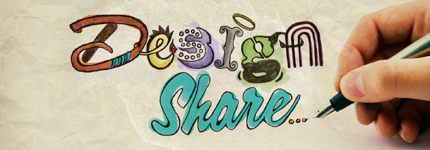Design Share, an Event Series
Tom Osborne, Former VP, Design
Article Category:
Posted on

Let’s face it. 2008 was one of the wackiest years on record. In America, we witnessed a roller coaster presidential campaign make history by electing the nation’s first descendant of Africa, Barack Obama, as President. We watched financial markets worldwide tumble exposing scandal and corruption at many levels of society. Gas prices rose to unbearable heights only to fall more than half in less than a six month period. All this and more leading to widespread belt-tightening across the corporate spectrum where friends, loved ones, and -- sometimes -- we ourselves were left wondering what job opportunities await.
So what can we as designers do in such periods of uncertainty? It's not always clear. Do we compromise standards established during healthier times? Do we freelance when we might not have done so otherwise? Do we take on controversial spec work and hope that others won’t notice or call us out on (be careful)? All good questions. One thing we can do is to learn from each other.
It's reasons like these that we decided to create an event series called Design Share. With more and more emphasis on design efficiency, we thought it would be helpful to create an event where designers could share a behind-the-scenes look at design from concept to implementation. This was a chance to learn different process and problem-solving techniques from other designers in our area. In looking around at some trends in the event space, here’s how we decided to do it:
- 6 Presenters, 5 Minutes Each
By supporting multiple presenters and limiting the presentation time, we were able to pack a normally full day event into a single evening. This benefits the audience by getting to the interesting parts of the projects quickly, and prevents the speakers from having to spend weeks preparing a longer presentation. - 15-Minute Rotations
With the hopes of good, healthy discussions, we set aside an additional 10 minutes after each presentation for Q&A. With 6 presenters on 15-minute rotations, the event would be complete in roughly 90 minutes to keep the event energetic and the audience interest high. - Invite-Driven
To further our desire for meaningful discussions, we limited the attendance to 40 seats by sending out invitations prior to the event. Invitees were hand selected from our address books based on who we thought would be interested in such an event. Seats were filled on a first-come, first-served basis. This was less about being exclusive and more about keeping the conversations focused. - Attendees
The audience comprised visual designers, ux designers, and front-end web developers. The goal was to make the web designer the focus unlike other local events that typically are more geared to the front-end web developer role.
The Event
Design Share, Winter '09 from Viget Labs on Vimeo
The event itself took place on Wednesday, January 7, 2009 at Viget Labs. There were about 40 people including the 6 speakers in attendance. While there wasn’t a set theme in place prior to the event, let’s just say that mood boards became a recurring theme in several of the presentations. Perhaps the most interesting thing about mood boards was seeing how differently they can be used.
The 6 speakers:
- Brian Talbot, National Geographic
Brian talked about the process of taking National Geographic’s Green Guide online -- a classic case of moving from print to web, looking to broaden an audience without alienating an exisiting one. - Jay Moore, Thirsty Interactive
Jay shared a tale of using the Goldilocks metaphors of “Papa Bear, Mama Bear, and Baby Bear,” to present mood boards to an inhouse client at AOL Red. - Eric Lohman, AKQA
Eric walked us through a substantial redesign and rebranding project for NHL.com, explaining how they took a simple concept of “black ice” and built an entire brand and interactive experience around it. - Ari Kushimoto Norris, CaviarFrenchFries
Ari showed us how research and inspiration can come together as mood boards and comps to help accelerate the design process for the Association of Financial Professionals. - Rob Soulé, Viget Labs
Rob explained how using surveys and brand personality questions helped inspire design decisions and set expectations for an undisclosed client. - Jason Garber, Mixx
Jason previewed designs for a flash fiction website dubbed Ficly and offered ideas on how to get help when there is zero budget.
Attendee Trevor Davis of Matrix Group International offered his own summary on each of the presentations on his blog.
The Conclusion
Now that the first Design Share is over, and we’ve been able to collect some feedback, I think it's fair to call the first event a success. We hope to make good on our promise to make this a series and schedule our next one to take place in the next 2 or 3 months. Though most of the feedback suggests not to change anything, we’ll likely make the following changes:
- Less presenters
We can reduce the number of speakers to 4 or 5 and perhaps support time for a group Q&A at the end. - Intermission
Even though this was a short event, we can divide it into two parts to support a quick intermission as suggested by several attendees. - Themes
It might be fun to organize an event so that each of the presentations is about doing work for a non-profit, a start-up company, or in-house organization. While this may make it harder to find interested speakers, it would make for an even more focused event.
These are just some of the helpful suggestions we’ve received. Feel free to offer any additional ideas here. This will continue to be a compact, invite-driven event. If you would like to be considered for future Design Share events at Viget Labs, please send your name and email address to tom.osborne [at] viget.com.